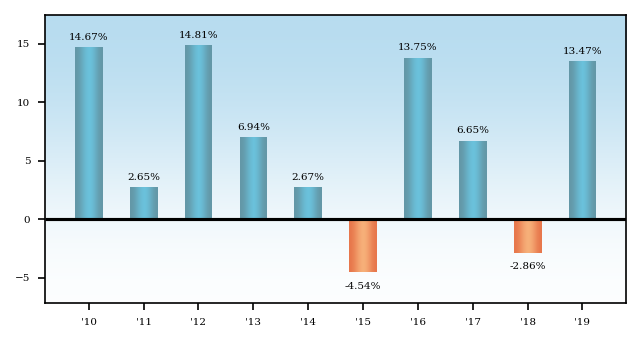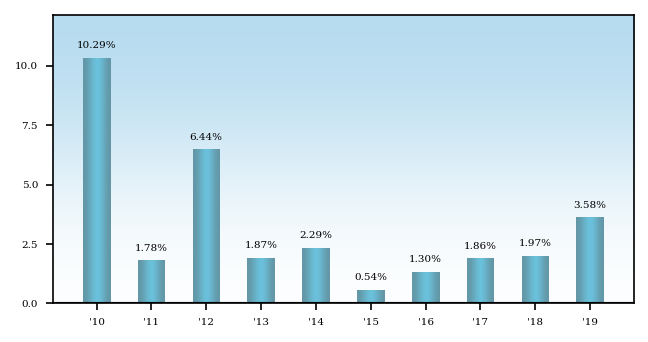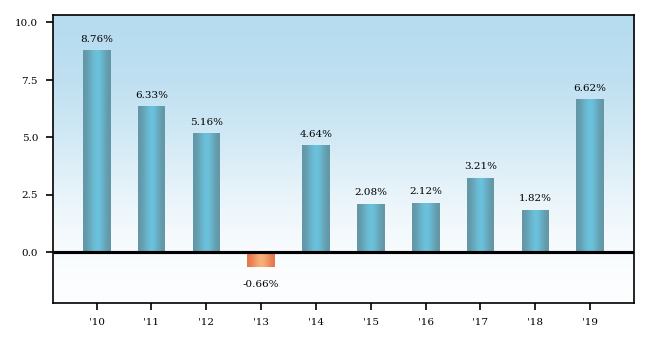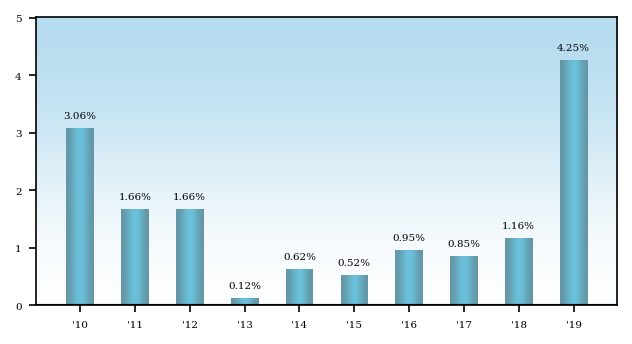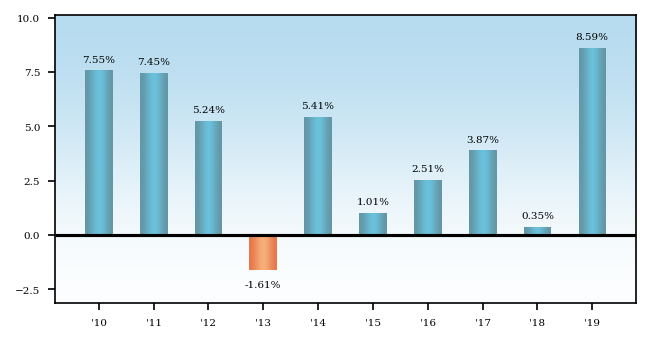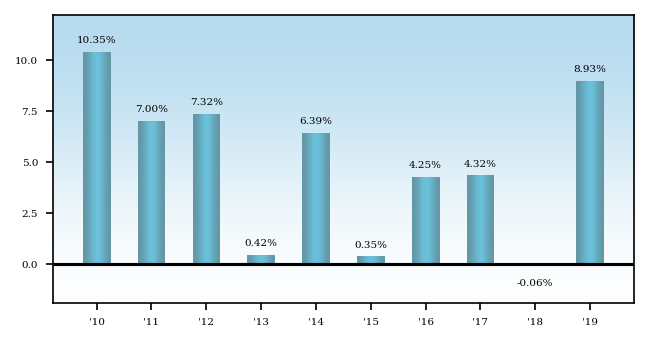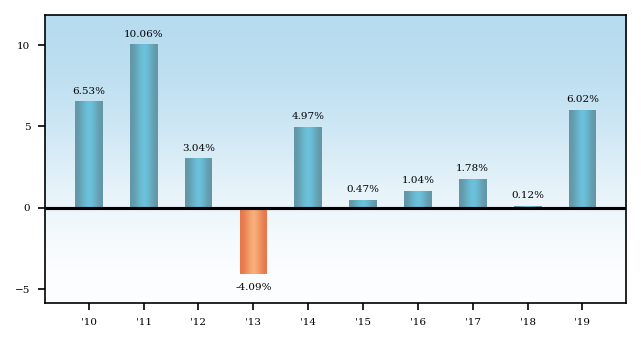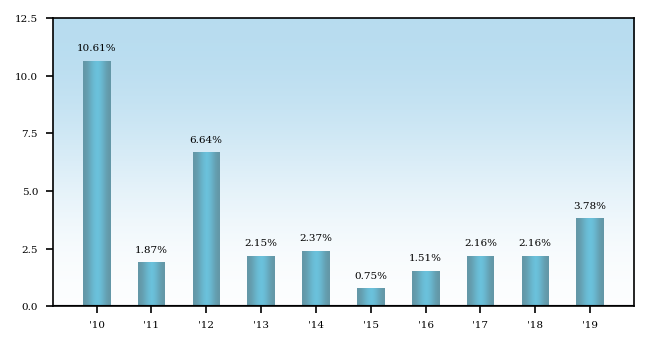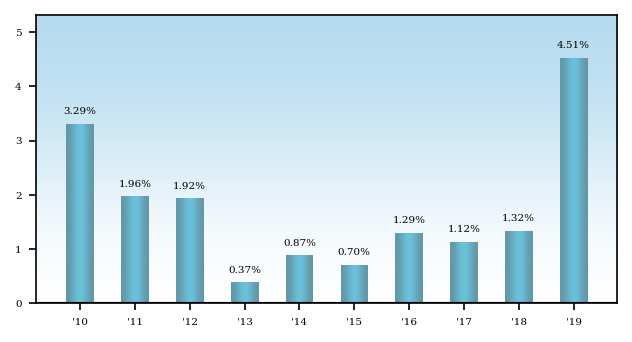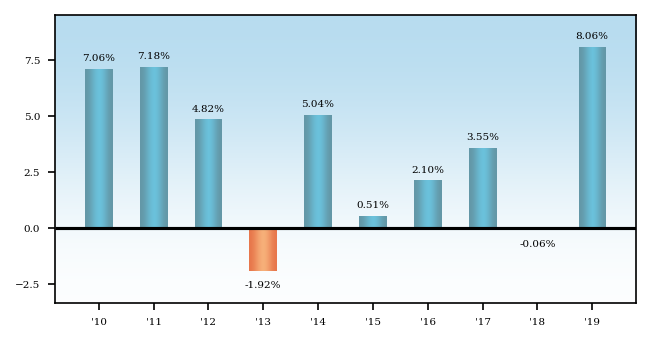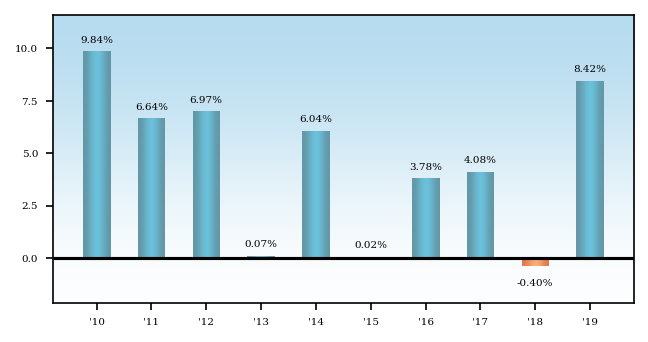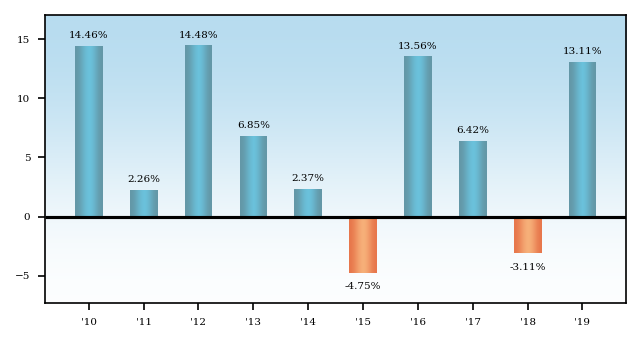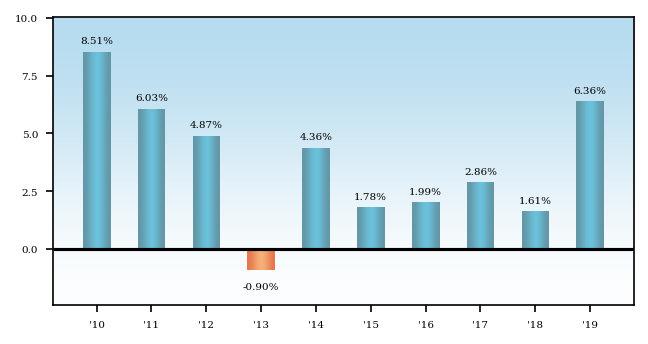Total | |||||||||||||||||||||||||||||||||||||||||||||||||
|---|---|---|---|---|---|---|---|---|---|---|---|---|---|---|---|---|---|---|---|---|---|---|---|---|---|---|---|---|---|---|---|---|---|---|---|---|---|---|---|---|---|---|---|---|---|---|---|---|---|
| A, C, I Shares | JPMorgan Core Bond Fund | |||||||||||||||||||||||||||||||||||||||||||||||||
| JPMorgan Core Bond Fund Class/Ticker: A/PGBOX; C/OBOCX; I/WOBDX | |||||||||||||||||||||||||||||||||||||||||||||||||
| What is the goal of the Fund? | |||||||||||||||||||||||||||||||||||||||||||||||||
| The Fund seeks to maximize total return by investing primarily in a diversified portfolio of intermediate- and long-term debt securities. | |||||||||||||||||||||||||||||||||||||||||||||||||
| Fees and Expenses of the Fund | |||||||||||||||||||||||||||||||||||||||||||||||||
| The following tables describe the fees and expenses that you may pay if you buy, hold and sell shares of the Fund. You may qualify for sales charge discounts on purchases of Class A Shares if you and your family invest, or agree to invest in the future, at least $100,000 in the J.P. Morgan Funds. More information about these and other discounts is available from your financial intermediary and in “Investing with J.P. Morgan Funds — SALES CHARGES AND FINANCIAL INTERMEDIARY COMPENSATION” on page 164 and in “Financial Intermediary-Specific Sales Charge Waivers” in Appendix A of the prospectus and in “PURCHASES, REDEMPTIONS AND EXCHANGES” in Appendix A to Part II of the Statement of Additional Information. You may be required to pay a commission to your Financial Intermediary for purchases of Class I Shares. Such commissions are not reflected in the tables or the example below. | |||||||||||||||||||||||||||||||||||||||||||||||||
| SHAREHOLDER FEES (Fees paid directly from your investment) | |||||||||||||||||||||||||||||||||||||||||||||||||
| |||||||||||||||||||||||||||||||||||||||||||||||||
| ANNUAL FUND OPERATING EXPENSES (Expenses that you pay each year as a percentage of the value of your investment) | |||||||||||||||||||||||||||||||||||||||||||||||||
| |||||||||||||||||||||||||||||||||||||||||||||||||
| Example | |||||||||||||||||||||||||||||||||||||||||||||||||
| This Example is intended to help you compare the cost of investing in the Fund with the cost of investing in other mutual funds. The Example assumes that you invest $10,000 in the Fund for the time periods indicated. The Example also assumes that your investment has a 5% return each year and that the Fund’s operating expenses are equal to the total annual fund operating expenses after fee waivers and expense reimbursements shown in the fee table through 6/30/21 and total annual fund operating expenses thereafter. Your actual costs may be higher or lower. | |||||||||||||||||||||||||||||||||||||||||||||||||
| IF YOU SELL YOUR SHARES, YOUR COST WOULD BE: | |||||||||||||||||||||||||||||||||||||||||||||||||
| |||||||||||||||||||||||||||||||||||||||||||||||||
| IF YOU DO NOT SELL YOUR SHARES, YOUR COST WOULD BE: | |||||||||||||||||||||||||||||||||||||||||||||||||
| |||||||||||||||||||||||||||||||||||||||||||||||||
| Portfolio Turnover | |||||||||||||||||||||||||||||||||||||||||||||||||
| The Fund pays transaction costs, such as commissions, when it buys and sells securities (or “turns over” its portfolio). A higher portfolio turnover rate may indicate higher transaction costs and may result in higher taxes when Fund shares are held in a taxable account. These costs, which are not reflected in annual fund operating expenses or in the Example, affect the Fund’s performance. During the Fund’s most recent fiscal year, the Fund’s portfolio turnover rate was 29% of the average value of its portfolio. | |||||||||||||||||||||||||||||||||||||||||||||||||
| What are the Fund’s main investment strategies? | |||||||||||||||||||||||||||||||||||||||||||||||||
| The Fund is designed to maximize total return by investing in a portfolio of investment grade intermediate- and long-term debt securities. As part of its main investment strategy, the Fund may principally invest in corporate bonds, U.S. treasury obligations including treasury coupon strips and treasury principal strips, and other U.S. government and agency securities, and asset-backed, mortgage-related and mortgage-backed securities. Mortgage-related and mortgage-backed securities may be structured as collateralized mortgage obligations (agency and non-agency), stripped mortgage-backed securities, commercial mortgage-backed securities, mortgage pass-through securities and cash and cash equivalents. These securities may be structured such that payments consist of interest-only (IO), principal-only (PO) or principal and interest. As a matter of fundamental policy, the Fund will invest at least 80% of its Assets in bonds. For purposes of this policy, “Assets” means net assets plus the amount of borrowings for investment purposes. Generally, such bonds will have intermediate to long maturities. The Fund’s average weighted maturity will ordinarily range between four and 12 years. The Fund may have a longer or shorter average weighted maturity under certain market conditions and the Fund may shorten or lengthen its average weighted maturity if deemed appropriate for temporary defensive purposes. Because of the Fund’s holdings in asset-backed, mortgage-backed and similar securities, the Fund’s average weighted maturity is equivalent to the average weighted maturity of the cash flows in the securities held by the Fund given certain prepayment assumptions (also known as weighted average life). Securities will be rated investment grade (or the unrated equivalent) at the time of purchase. In addition, all securities will be U.S. dollar-denominated although they may be issued by a foreign corporation or a U.S. affiliate of a foreign corporation or a foreign government or its agencies and instrumentalities. The adviser may invest a significant portion or all of its assets in mortgage-related and mortgage-backed securities in the adviser’s discretion. The Fund expects to invest no more than 10% of its assets in “sub-prime” mortgage-related securities at the time of purchase. The adviser buys and sells securities and investments for the Fund based on its view of individual securities and market sectors. Taking a long-term approach, the adviser looks for individual fixed income investments that it believes will perform well over market cycles. The adviser is value oriented and makes decisions to purchase and sell individual securities and instruments after performing a risk/reward analysis that includes an evaluation of interest rate risk, credit risk, duration, liquidity, legal provisions and the structure of the transaction. As part of its security selection process, the adviser also evaluates whether environmental, social and governance factors could have a material negative or positive impact on the cash flows or risk profiles of many companies in the universe in which the Fund may invest. These determinations may not be conclusive and securities of issuers that may be negatively impacted by such factors may be purchased and retained by the Fund while the Fund may divest or not invest in securities of issuers that may be positively impacted by such factors. The Fund may enter into lending agreements under which the Fund would lend money for temporary purposes directly to another J.P. Morgan Fund through a credit facility, subject to meeting the conditions of an SEC exemptive order granted to the Fund permitting such interfund lending. | |||||||||||||||||||||||||||||||||||||||||||||||||
| The Fund’s Main Investment Risks | |||||||||||||||||||||||||||||||||||||||||||||||||
| The Fund is subject to management risk and may not achieve its objective if the adviser’s expectations regarding particular instruments or markets are not met. An investment in this Fund or any other fund may not provide a complete investment program. The suitability of an investment in the Fund should be considered based on the investment objective, strategies and risks described in this prospectus, considered in light of all of the other investments in your portfolio, as well as your risk tolerance, financial goals and time horizons. You may want to consult with a financial advisor to determine if this Fund is suitable for you. The Fund is subject to the main risks noted below, any of which may adversely affect the Fund’s performance and ability to meet its investment objective. General Market Risk. Economies and financial markets throughout the world are becoming increasingly interconnected, which increases the likelihood that events or conditions in one country or region will adversely impact markets or issuers in other countries or regions. Securities in the Fund’s portfolio may underperform in comparison to securities in general financial markets, a particular financial market or other asset classes due to a number of factors, including inflation (or expectations for inflation), deflation (or expectations for deflation), interest rates, global demand for particular products or resources, market instability, debt crises and downgrades, embargoes, tariffs, sanctions and other trade barriers, regulatory events, other governmental trade or market control programs and related geopolitical events. In addition, the value of the Fund’s investments may be negatively affected by the occurrence of global events such as war, terrorism, environmental disasters, natural disasters or events, country instability, and infectious disease epidemics or pandemics. For example, the outbreak of COVID-19, a novel coronavirus disease, has negatively affected economies, markets and individual companies throughout the world, including those in which the Fund invests. The effects of this pandemic to public health and business and market conditions, including exchange trading suspensions and closures may continue to have a significant negative impact on the performance of the Fund’s investments, increase the Fund’s volatility, exacerbate pre-existing political, social and economic risks to the Fund, and negatively impact broad segments of businesses and populations. The Fund’s operations may be interrupted as a result, which may contribute to the negative impact on investment performance. In addition, governments, their regulatory agencies, or self-regulatory organizations may take actions in response to the pandemic that could affect the instruments in which the Fund invests, or the issuers of such instruments, in ways that could have a significant negative impact on the Fund’s investment performance. The full impact of the COVID-19 pandemic, or other future epidemics or pandemics, is currently unknown. Interest Rate Risk. The Fund’s investments in bonds and other debt securities will change in value based on changes in interest rates. If rates increase, the value of these investments generally declines. Securities with greater interest rate sensitivity and longer maturities generally are subject to greater fluctuations in value. The Fund may invest in variable and floating rate securities. Although these instruments are generally less sensitive to interest rate changes than fixed rate instruments, the value of variable and floating rate securities may decline if their interest rates do not rise as quickly, or as much, as general interest rates. The Fund may face a heightened level of interest rate risk due to certain changes in monetary policy. During periods when interest rates are low or there are negative interest rates, the Fund’s yield (and total return) also may be low or the Fund may be unable to maintain positive returns. Credit Risk. The Fund’s investments are subject to the risk that issuers and/or counterparties will fail to make payments when due or default completely. Prices of the Fund’s investments may be adversely affected if any of the issuers or counterparties it is invested in are subject to an actual or perceived deterioration in their credit quality. Credit spreads may increase, which may reduce the market values of the Fund’s securities. Credit spread risk is the risk that economic and market conditions or any actual or perceived credit deterioration may lead to an increase in the credit spreads (i.e., the difference in yield between two securities of similar maturity but different credit quality) and a decline in price of the issuer’s securities. Government Securities Risk. The Fund invests in securities issued or guaranteed by the U.S. government or its agencies and instrumentalities (such as securities issued by the Government National Mortgage Association (Ginnie Mae), the Federal National Mortgage Association (Fannie Mae), or the Federal Home Loan Mortgage Corporation (Freddie Mac)). U.S. government securities are subject to market risk, interest rate risk and credit risk. Securities, such as those issued or guaranteed by Ginnie Mae or the U.S. Treasury, that are backed by the full faith and credit of the United States are guaranteed only as to the timely payment of interest and principal when held to maturity and the market prices for such securities will fluctuate. Notwithstanding that these securities are backed by the full faith and credit of the United States, circumstances could arise that would prevent the payment of interest or principal. This would result in losses to the Fund. Securities issued or guaranteed by U.S. government-related organizations, such as Fannie Mae and Freddie Mac, are not backed by the full faith and credit of the U.S. government and no assurance can be given that the U.S. government will provide financial support. Therefore, U.S. government-related organizations may not have the funds to meet their payment obligations in the future. Asset-Backed, Mortgage-Related and Mortgage-Backed Securities Risk. The Fund may invest in asset-backed, mortgage-related and mortgage-backed securities including so-called “sub-prime” mortgages that are subject to certain other risks including prepayment and call risks. When mortgages and other obligations are prepaid and when securities are called, the Fund may have to reinvest in securities with a lower yield or fail to recover additional amounts (i.e., premiums) paid for securities with higher interest rates, resulting in an unexpected capital loss and/or a decrease in the amount of dividends and yield. In periods of either rising or declining interest rates, the Fund may be subject to extension risk, and may receive principal later than expected. As a result, in periods of rising interest rates, the Fund may exhibit additional volatility. During periods of difficult or frozen credit markets, significant changes in interest rates or deteriorating economic conditions, such securities may decline in value, face valuation difficulties, become more volatile and/or become illiquid. Additionally, asset-backed, mortgage-related and mortgage-backed securities are subject to risks associated with their structure and the nature of the assets underlying the securities and the servicing of those assets. Certain asset-backed, mortgage-related and mortgage-backed securities may face valuation difficulties and may be less liquid than other types of asset-backed, mortgage-related and mortgage-backed securities, or debt securities. Collateralized mortgage obligations (CMOs) and stripped mortgage-backed securities, including those structured as interest-only (IOs) and principal-only (POs), are more volatile and may be more sensitive to the rate of prepayment than other mortgage-related securities. The risk of default, as described under “Credit Risk,” for “sub-prime” mortgages is generally higher than other types of mortgage-backed securities. The structure of some of these securities may be complex and there may be less available information than other types of debt securities. Prepayment Risk. The issuer of certain securities may repay principal in advance, especially when yields fall. Changes in the rate at which prepayments occur can affect the return on investment of these securities. When debt obligations are prepaid or when securities are called, the Fund may have to reinvest in securities with a lower yield. The Fund also may fail to recover additional amounts (i.e., premiums) paid for securities with higher coupons, resulting in an unexpected capital loss. Foreign Issuer Risks. U.S. dollar-denominated securities of foreign issuers or U.S. affiliates of foreign issuers may be subject to additional risks not faced by domestic issuers. These risks include political and economic risks, civil conflicts and war, greater volatility, expropriation and nationalization risks, sanctions or other measures by the United States or other governments, and regulatory issues facing issuers in such foreign countries. Events and evolving conditions in certain economies or markets may alter the risks associated with investments tied to countries or regions that historically were perceived as comparatively stable becoming riskier and more volatile. Geographic Focus Risk. The Fund may focus its investments in one or more regions or small groups of countries. As a result, the Fund’s performance may be subject to greater volatility than a more geographically diversified fund. Industry and Sector Focus Risk. At times, the Fund may increase the relative emphasis of its investments in a particular industry or sector. The prices of securities of issuers in a particular industry or sector may be more susceptible to fluctuations due to changes in economic or business conditions, government regulations, availability of basic resources or supplies, or other events that affect that industry or sector more than securities of issuers in other industries and sectors. To the extent that the Fund increases the relative emphasis of its investments in a particular industry or sector, its shares’ values may fluctuate in response to events affecting that industry or sector. LIBOR Discontinuance or Unavailability Risk. The London InterBank Offered Rate (“LIBOR”) is intended to represent the rate at which contributing banks may obtain short-term borrowings from each other in the London interbank market. The regulatory authority that oversees financial services firms and financial markets in the U.K. has announced that, after the end of 2021, it would no longer persuade or compel contributing banks to make rate submissions for purposes of determining the LIBOR rate. As a result, it is possible that commencing in 2022, LIBOR may no longer be available or no longer deemed an appropriate reference rate upon which to determine the interest rate on or impacting certain loans, notes, derivatives and other instruments or investments comprising some or all of the Fund’s portfolio. In light of this eventuality, public and private sector industry initiatives are currently underway to identify new or alternative reference rates to be used in place of LIBOR. There is no assurance that the composition or characteristics of any such alternative reference rate will be similar to or produce the same value or economic equivalence as LIBOR or that it will have the same volume or liquidity as did LIBOR prior to its discontinuance or unavailability, which may affect the value or liquidity or return on certain of the Fund’s investments and result in costs incurred in connection with closing out positions and entering into new trades. Interfund Lending Risk. A delay in repayment to the Fund from a borrowing fund could result in lost opportunity costs. Interfund loans are subject to the risk that the borrowing fund could be unable to repay the loan when due. In the case of a default by a borrowing fund and to the extent that the loan is collateralized, the Fund could take possession of collateral that the Fund is not permitted to hold and, therefore, would be required to dispose of such collateral as soon as possible, which could result in a loss to the Fund. Transactions Risk. The Fund could experience a loss and its liquidity may be negatively impacted when selling securities to meet redemption requests by shareholders. The risk of loss increases if the redemption requests are unusually large or frequent or occur in times of overall market turmoil or declining prices. Similarly, large purchases of Fund shares may adversely affect the Fund’s performance to the extent that the Fund is delayed in investing new cash and is required to maintain a larger cash position than it ordinarily would. Investments in the Fund are not deposits or obligations of, or guaranteed or endorsed by, any bank and are not insured or guaranteed by the FDIC, the Federal Reserve Board or any other government agency. | |||||||||||||||||||||||||||||||||||||||||||||||||
| The Fund’s Past Performance | |||||||||||||||||||||||||||||||||||||||||||||||||
| This section provides some indication of the risks of investing in the Fund. The bar chart shows how the performance of the Fund’s Class I Shares has varied from year to year for the past ten calendar years. The table shows the average annual total returns for the past one year, five years, and ten years. The table compares the Fund’s performance to the performance of the Bloomberg Barclays U.S. Aggregate Index. Past performance (before and after taxes) is not necessarily an indication of how any class of the Fund will perform in the future. Updated performance information is available by visiting www.jpmorganfunds.com or by calling 1-800-480-4111. | |||||||||||||||||||||||||||||||||||||||||||||||||
| YEAR-BY-YEAR RETURNS — CLASS I SHARES | |||||||||||||||||||||||||||||||||||||||||||||||||

| |||||||||||||||||||||||||||||||||||||||||||||||||
The Fund’s year-to-date total return through 3/31/20 was 2.40%. | |||||||||||||||||||||||||||||||||||||||||||||||||
| AVERAGE ANNUAL TOTAL RETURNS (For periods ended December 31, 2019) | |||||||||||||||||||||||||||||||||||||||||||||||||
| |||||||||||||||||||||||||||||||||||||||||||||||||
| After-tax returns are shown for only the Class I Shares and after-tax returns for the other classes will vary. After-tax returns are calculated using the historical highest individual federal marginal income tax rates and do not reflect the impact of state and local taxes. Actual after-tax returns depend on the investor’s tax situation and may differ from those shown, and the after-tax returns shown are not relevant to investors who hold their shares through tax-deferred arrangements such as 401(k) plans or individual retirement accounts. | |||||||||||||||||||||||||||||||||||||||||||||||||


